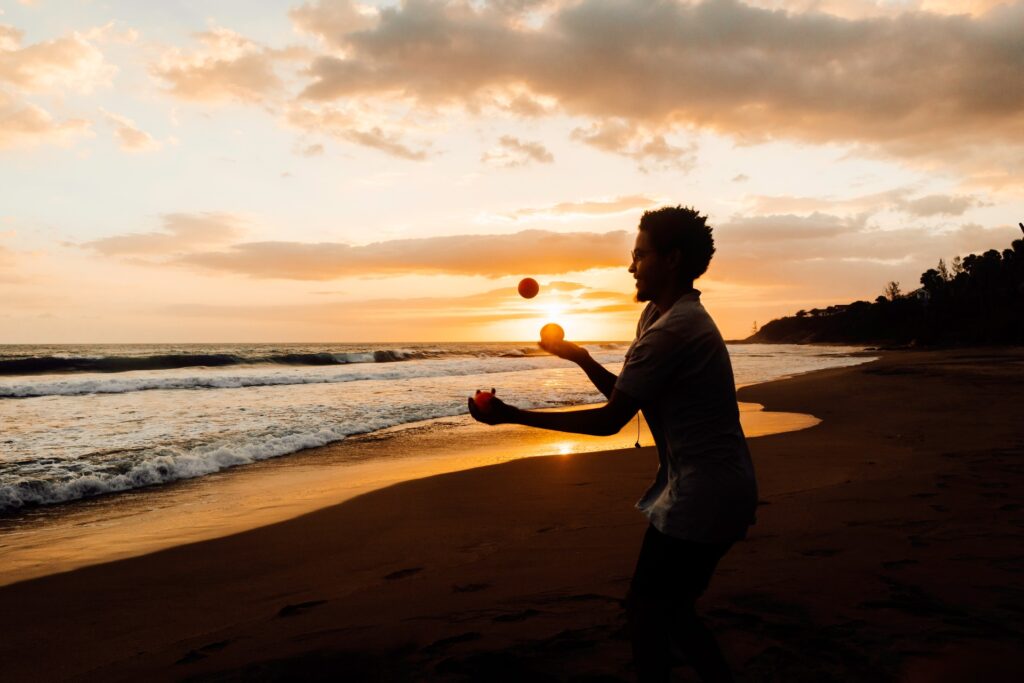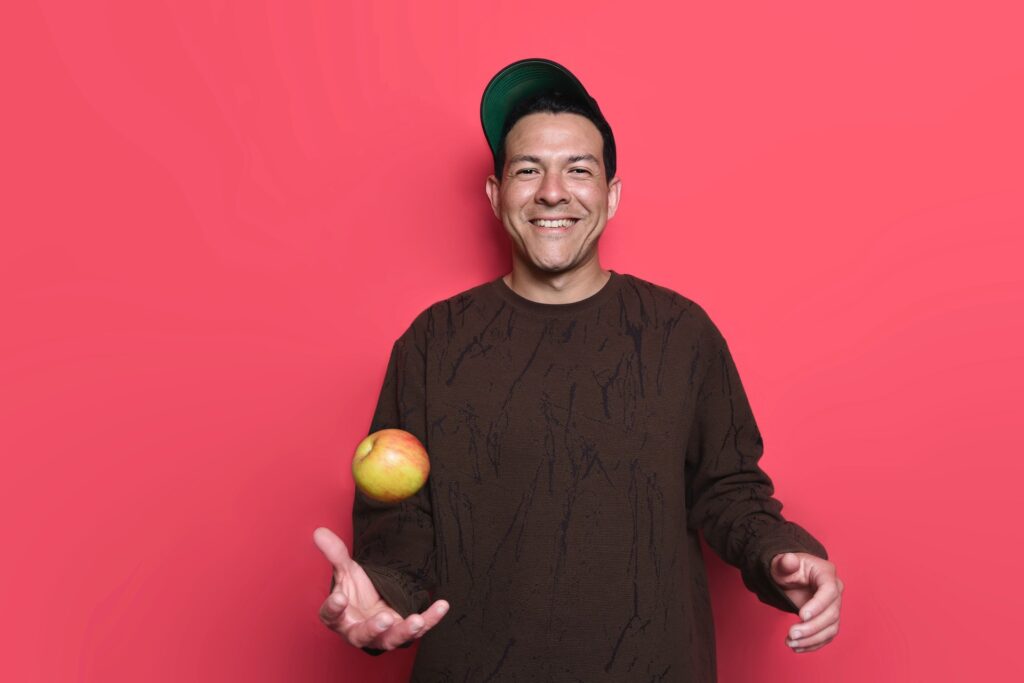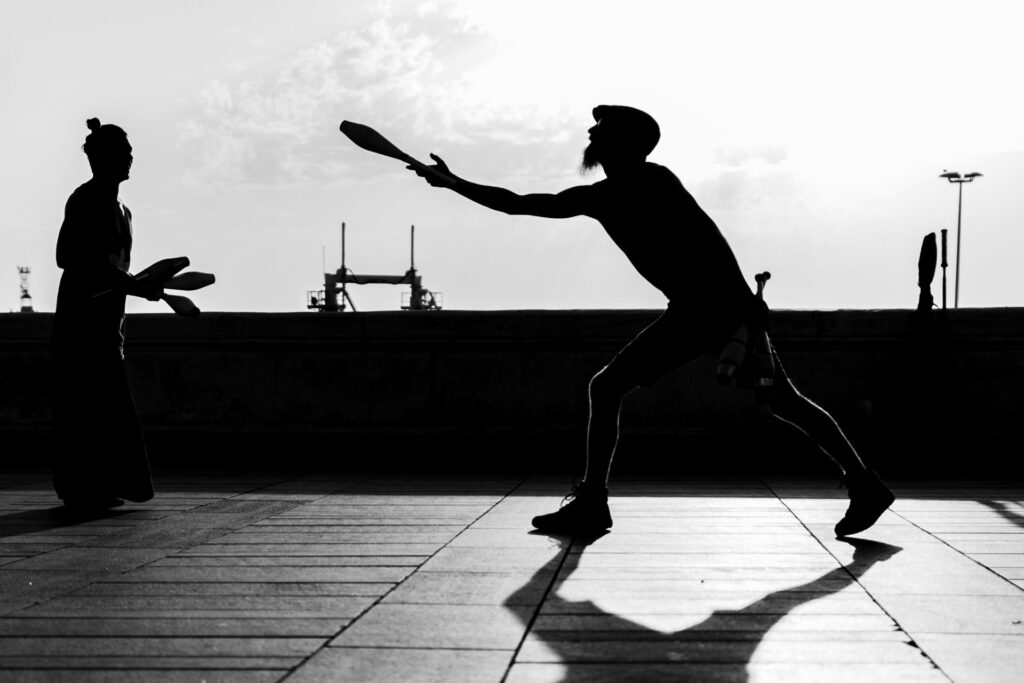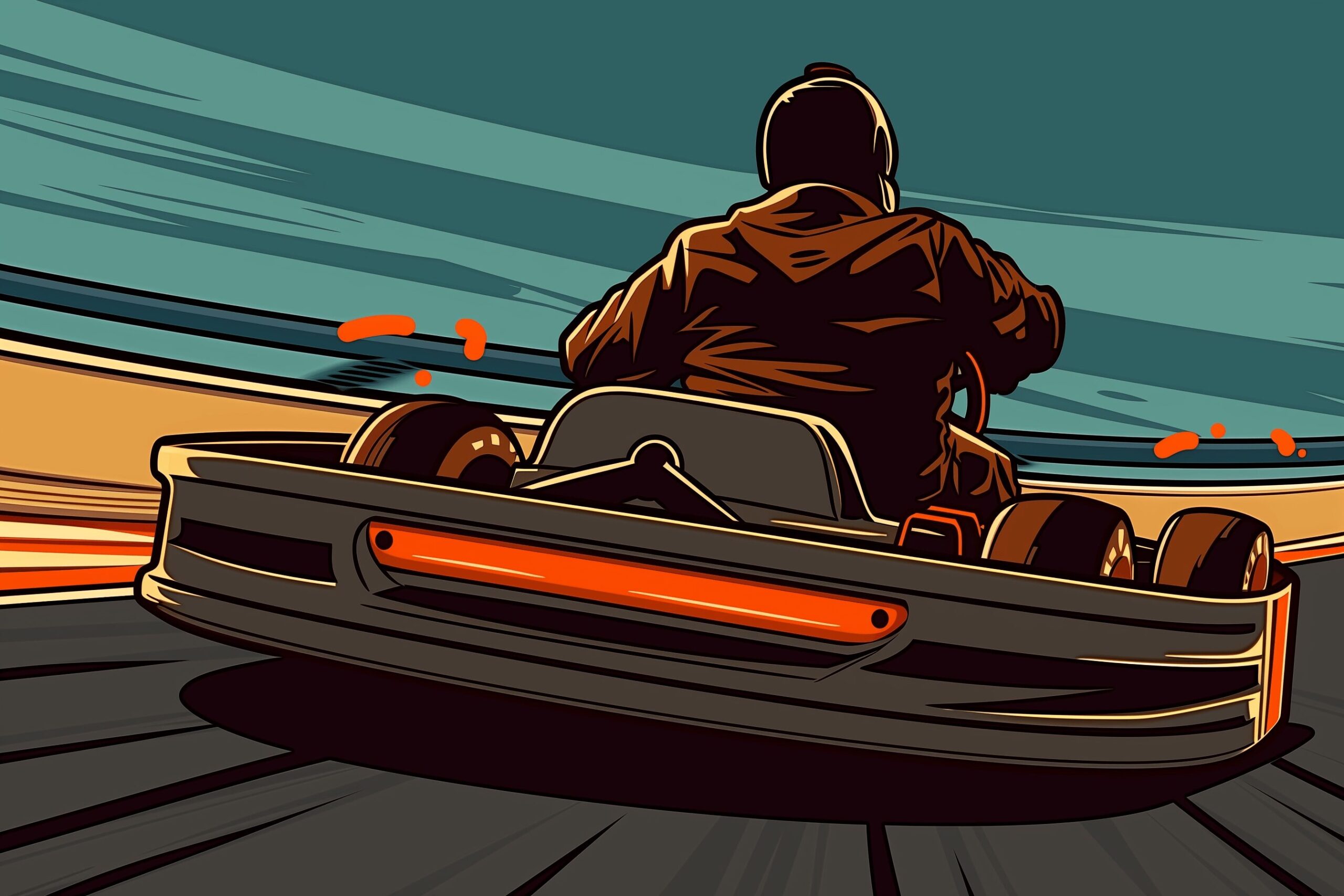
As an Amazon Associate, Modded gets commissions for purchases made through links in this post.
Juggling isn’t just a circus trick reserved for entertainers — it’s an exciting skill with a range of benefits. Let’s dive into how to juggle and why you should seriously consider adding it to your repertoire.
Why Learn How to Juggle
Before we jump into the “how,” let’s address the “why.” Juggling might seem like a hobby better left to the pros, but there’s more to it than meets the eye. Before you dismiss it as a mere circus act, here are a few reasons why you should give juggling a go.
1. Impress the Crowd
Imagine being the guy who effortlessly juggles at parties or even in the park. Everyone’s attention will shift from their drinks to your incredible talent. It’s a great way to stand out or make a memorable first impression.
2. Boost Your Coordination
You may be no stranger to multitasking, but juggling takes coordination to a whole new level. It’s like rubbing your stomach and patting your head at the same time, but cooler. The more you practice, the better your hand-eye coordination becomes — something that’s sure to benefit you as you age.

3. Relieve Stress
In the hustle and bustle of everyday life, sometimes you need an escape. Juggling is like a mini-vacation for your mind. When you focus on the balls, you forget about your worries and live in the moment — like you do when hitting the gym or playing video games.
Next time you feel overwhelmed after a long day at work, pick up the juggling balls for as little as five minutes to take your mind off things and get some practice in while you’re at it.
4. Conversation Starter
Are you tired of the same old icebreakers? Juggling allows you to skip the introductions and keep things interesting. “Hey, did you know I can juggle?” is bound to get more attention than the usual “So, what do you do?”
5. Flex Those Mental Muscles
Juggling isn’t just for your hands — it’s for your brain too. As you work on the rhythm and timing, your brain gets a workout. It’s like a mental puzzle that rewards you with the satisfaction of nailing that perfect juggle. Juggling can improve your focus, memory and visual processing abilities by working both sides of your brain.

How to Juggle — The Basic Three-Ball Juggle
Three balls are the starting point for all novice jugglers. Here’s a step-by-step breakdown of how to get started.
1. Get Some Juggling Balls
First things first, you’ll need some juggling balls. Not the ones that bounce — find small balls specifically designed for juggling or use some beanbags. Three balls are all you need when starting out. Later, you can move onto bigger objects, like fire poi spinning or using oversized objects.
2. Start with One Ball
Hold one ball in your dominant hand. Get comfortable with the weight and practice tossing it from one hand to the other. Toss it at eye level near the opposite shoulder.
3. Add Another Ball
Easy enough, right? Now it’s time to add the second ball. Start with a ball in each hand this time. Throw the ball from your dominant hand to your non-dominant hand, just like before. But here’s the trick — as the first ball reaches its peak, toss the second ball from your dominant hand to your non-dominant hand. Practice this until it becomes familiar.
4. Add the Third Ball
You’re almost there. Now, as the second ball reaches its peak, toss the first ball from your non-dominant hand back to your dominant hand. Keep the cycle going — toss, toss, catch, toss, toss, catch. One ball should be in the air at all times.
5. Trial and Error
It’s challenging at first. Balls might crash-land more often than you’d like, and it’s easy to get frustrated. But every drop is a step closer to nailing it. The key is to persevere and laugh at the occasional fumble.

Pro Tips on How to Juggle
You might not become an expert juggler right away. However, keeping these pro tips in mind will help you excel faster.
Practice
Juggling isn’t something you can master overnight. It’s a skill that takes time and effort to develop. Dedicate a few minutes each day to practice, and you’ll see steady improvement. Remember, even the most impressive jugglers started somewhere.
Start Slow
There’s no need to go full-on circus performer from the get-go. Start with slower, controlled tosses, and gradually increase the speed as you gain confidence.
Focus on the Pattern
Juggling is all about patterns. Pay attention to the rhythm and timing of your throws. Once you find your groove, you’ll settle into a rhythm.
Accept the Drops
Drops are inevitable, but they’re the best time to learn lessons. Each drop shows where you need to improve and what adjustments to make.
Stay Relaxed
Juggling and tension don’t mix well. Keep your body — especially your shoulders — relaxed as you juggle. Let your fingers and wrists do the work. Remember to stand up straight and put your shoulders back.
Mastering How to Juggle — Beyond the Basics
As you master the three-ball juggle, you might find yourself hungry for more challenges. Luckily, the juggling world is vast and offers a variety of props and techniques to explore. Here are a few avenues you can venture into once you’ve grasped the basics:
- Different props: Expand your toolkit by exploring other props. From juggling clubs and rings to devil sticks and diabolos, each prop introduces new challenges and dimensions to your juggling experience.
- Add movements: Incorporate some spins and twists into your routine to make it that extra bit more challenging.
- Make it your own: Once you’re comfortable with the technical aspects, it’s time to infuse your personal style. Play with different heights, patterns and combinations to create your unique routine. Juggling is as much an art form as it is a skill.

The Physical Perks of Juggling
In addition to mental stimulation, juggling offers attractive physical benefits. The continuous motion and controlled throws engage various muscle groups, particularly in the arms, shoulders and even your core, improving muscle tone and overall upper body strength. Juggling is almost as good as lifting some weights. Additionally, juggling burns a fair amount of calories. Depending on your body weight, you can burn roughly 280 calories during a one-hour session.
Juggling is a sequence of calculated movements that improve your reflexes. Your brain processes the trajectory of each ball, making split-second decisions about when and where to catch them. This constant decision-making hones your reflexes, making you more responsive and agile in real-life situations like tripping and falling or touching a hot surface.
Learning How to Juggle Has Health Benefits
So, there you have it — a comprehensive guide to juggling and why it deserves a spot in your skillset. Beyond the entertainment factor, juggling refines your coordination, relieves stress and challenges your mind. The three-ball juggle is your starting point and with dedication and practice, you’ll level up your juggling game in no time.
Stay up to date with the latest by subscribing to Modded Minute.
Author
Jack Shaw is a senior writer at Modded. Jack is an avid enthusiast for keeping up with personal health and enjoying nature. He has over five years of experience writing in the men's lifestyle niche, and has written extensively on topics of fitness, exploring the outdoors and men's interests. His writings have been featured in SportsEd TV, Love Inc., and Offroad Xtreme among many more publications.






